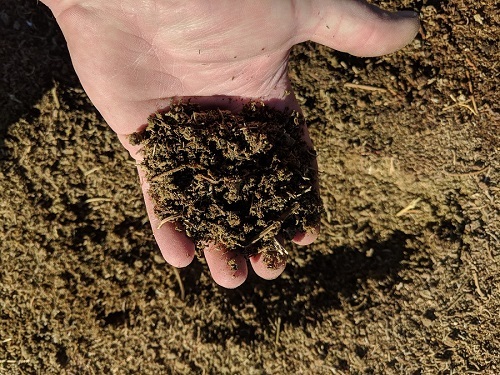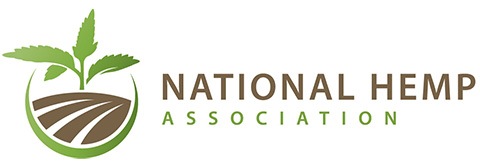In the few short years since its legalization, the hemp sector has found itself with limited answers to an increasingly urgent question: What is to be done with the millions of tons of post-extraction hemp biomass generated annually by the industry?
Last year, Jonathan Lee, co-founder of California-based GAIACA Waste Revitalization estimated that, despite concerns about sustainability and recycling, the U.S. cannabis industry generates about 150 million tons of waste annually. “We anticipate waste from the U.S. CBD industry to be similar to that of the U.S. cannabis (THC) Industry,” Garrett Rodewald, GAIACA’s Managing Member, said in an email to Hemp Benchmarks. “A variety of waste streams originating from processes including cultivation, manufacturing, production, distribution, sale, laboratory testing, and research. Waste directly from the hemp plant – biomass, stalks, and fibrous material; as well as waste from subsequent production – extraction chemicals and contaminated debris.”
For this article, Hemp Benchmarks spoke with hemp market participants, in addition to reviewing research and regulations underway across the country, to see how stakeholders are dealing with the massive amount of spent hemp biomass left over after the cannabinoid extraction process. At the moment, the most widespread and immediate approach to the hemp waste issue is simply disposal. However, potential markets for extracted biomass are being explored and developed.
How Much Hemp Waste Material is Left After Extraction?
Some private hemp enterprises are exploring economically-sound and eco-friendly alternatives to the disposal of spent hemp biomass, or that which has already been through the extraction process. Kris Schneider is Operations Manager at Biomass Isolations in northern Colorado, founded in 2018. His company, he told Hemp Benchmarks, works to be as efficient as possible in its operations, which consist of using cold ethanol to extract cannabinoids out of biomass to produce full-spectrum crude oil that is then refined into distillates and isolates.
Schneider said that his operation currently goes through up to a ton of hemp biomass daily. “Depending on the content of that hemp biomass, anywhere from 6% to 16% of its weight gets extracted,” he said. “That’s still typically at least 1,700, 1,800 pounds a day that we’re kicking out the door, and somebody’s got to do something with it.”
Stepping back to look at the national picture, Hemp Benchmarks estimates that roughly 200 million pounds of CBD hemp biomass was produced in the U.S. in the three years from 2019 through 2021. Due to the hemp-CBD market being oversupplied, an unknown, but significant portion of that biomass has not been put through the extraction process and likely never will. Still, assuming around 10% of the weight of hemp biomass is extracted during the process to produce crude oil, CBD and other cannabinoid extraction in the last three years has likely resulted in tens of millions pounds of spent hemp biomass, with much of that simply going to waste.
What Are Some Uses for Spent Hemp Biomass?
Schneider said he also assists other laboratories as they work to find alternative uses for that spent hemp waste material. One obvious use, he noted, is packaging and selling spent hemp biomass as compost. “Everyone [in the hemp industry] I talk with struggles with how do you make your plants happy,” he said, “how do you get to rich black soil without paying $250-plus a yard for something from one of these companies that’s making a compost, black dirt product.”
Schneider said that, depending on how long it has been since processing, any ethanol in the waste hemp biomass “off-gasses,” or evaporates; and when used for compost the spent biomass will get wet, with the moisture reducing any additional risks from the ethanol.
Currently Schneider’s company is selling off super sacks of material, weighing anywhere from 300 to 500 pounds, at $15 per sack. He noted that demand for his hemp compost is very strong, to the point where he has already pre-sold 50 super sacks. “If you were a small-time farmer, you’d kill to buy 300 to 500 pounds of alfalfa for that much,” he added.

Regarding his customers, “some are running gardening and composting businesses, some are just individuals looking for a cheap food source for their horse,” he said. “We tell people that, if they’re going to use it for animal feed, to spread it out and let it sit in the sun. That will evaporate any remaining ethanol. And animals will turn up their noses at any ethanol smell if it’s still there, anyway.”
At the moment, feeding spent hemp biomass to livestock and other animals is a practice that individuals are largely engaging in of their own accord. However, universities are currently conducting research on the matter, which could lead to commercial opportunities in the future.
What are Governments and Researchers Doing About the Hemp Waste Issue?
Researchers are also investigating other possibilities. This past summer, scientists at Virginia Tech University examined whether one byproduct of the CBD extraction process – a pectin found in the plant’s cell walls – could be used as a modifying agent in the production of plywood, structural composite lumber, and other wood-based materials. Chip Frazier, Professor of Sustainable Biomaterials at the university, noted that hemp waste has opened up new opportunities for researchers looking at alternative biological materials.
“Currently, the industry generates large quantities of solvent-extracted hemp flower, and all of that biomass is treated as waste,” he said in an article on the university’s web site, “so it couldn’t be cheaper for us as a raw material.”
Additionally, some state governments are considering regulations designed to cut down on waste generated by the industry. In November, a New York State senator introduced a measure that would require the state’s Cannabis Control Board to develop plans for the packaging of cannabis and industrial hemp products. The bill would also establish a “sustainable cannabis packaging incubator program” that would require those packaging materials to be compostable, biodegradable, and made with “no less than thirty percent hemp.”
What Hurdles Need to be Cleared if a Hemp Waste Industry is to Develop?
There are several major sticking points, according to Schneider, that currently stand in the way of the full emergence of a hemp waste industry. One is the stigma still hovering over hemp and cannabis in general. “I’ve tried to run a few ads on Facebook, and depending on the image that I use, I’ve actually had material flagged because I showed the raw biomass in my hands, instead of super sacks,” he noted.
Another major issue, he said, is the current federal regulatory environment, especially the Food and Drug Administration’s (FDA) stance on CBD and other hemp-derived cannabinoids. FDA currently considers CBD a drug ingredient, which means that it is technically not allowed to be marketed widely as a dietary supplement or added to foods. Additionally, any commercial uses of spent hemp biomass as animal feed must be approved by the FDA’s Center for Veterinary Medicine. Stakeholders have previously told Hemp Benchmarks that the approval process for any type of animal feed will likely take at least two years.
“There’s a lot of frustration in the industry that we’re still waiting on more guidance and guidelines from the FDA,” he said. Schneider believes that the adoption of federal policies towards hemp-derived cannabinoids “is going to take time.” This applies especially to GRAS, or Generally Recognized as Safe, an FDA designation for products that have been adequately shown to be safe under the conditions of their intended use, which the hemp industry would very much like to see applied to CBD.
Schneider summed up the economic incentive to develop applications for spent biomass. Instead of paying a dumpster service, “I see the need to capitalize on this spent material,” he said. “If you’re at the scale we’re at, or if you’re a bit smaller lab, that represents a huge investment to literally take a product that in my eyes has a lot of secondary uses, and bury it in a landfill, never to be seen again. As a business owner, that’s horrifying to me.”
Schneider concluded by emphasizing environmental concerns: “As a person who cares about the environment and likes to recycle whenever I can, it’s equally horrifying because it’s taking something that could have this eco-friendly repurposing and reusing, and have some positive benefits, and literally … throwing it out.”


